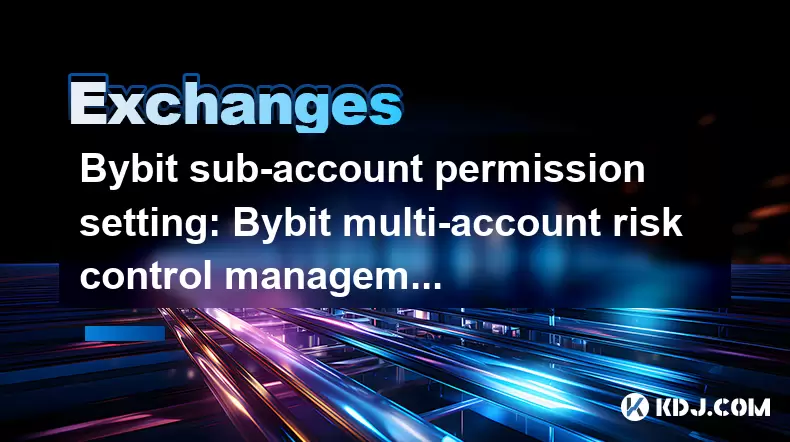-
 Bitcoin
Bitcoin $108500
-2.74% -
 Ethereum
Ethereum $4355
-2.78% -
 Tether USDt
Tether USDt $1.000
0.00% -
 XRP
XRP $2.815
-3.82% -
 BNB
BNB $858.1
-1.50% -
 Solana
Solana $205.1
-5.45% -
 USDC
USDC $0.9997
-0.02% -
 Dogecoin
Dogecoin $0.2168
-2.33% -
 TRON
TRON $0.3392
-1.39% -
 Cardano
Cardano $0.8326
-2.10% -
 Chainlink
Chainlink $23.35
-3.33% -
 Hyperliquid
Hyperliquid $44.45
-3.23% -
 Ethena USDe
Ethena USDe $1.001
-0.03% -
 Sui
Sui $3.299
-4.46% -
 Stellar
Stellar $0.3595
-3.95% -
 Bitcoin Cash
Bitcoin Cash $531.3
-4.35% -
 Cronos
Cronos $0.2992
-2.33% -
 Avalanche
Avalanche $23.58
-5.57% -
 Hedera
Hedera $0.2260
-4.25% -
 UNUS SED LEO
UNUS SED LEO $9.505
-0.82% -
 Litecoin
Litecoin $110.5
-2.45% -
 Toncoin
Toncoin $3.091
-1.91% -
 Shiba Inu
Shiba Inu $0.00001233
-1.95% -
 Polkadot
Polkadot $3.799
-3.73% -
 Uniswap
Uniswap $9.625
-3.38% -
 Dai
Dai $0.9999
0.00% -
 Bitget Token
Bitget Token $4.540
-1.59% -
 Monero
Monero $261.9
-1.23% -
 Aave
Aave $314.4
-0.18% -
 Ethena
Ethena $0.6572
-1.68%
Bybit sub-account permission setting: Bybit multi-account risk control management
Bybit's sub-accounts allow traders to manage multiple accounts with customizable permissions for trading, withdrawals, and API access, enhancing risk control and strategy segregation.
Jun 15, 2025 at 10:56 pm

Bybit, one of the leading cryptocurrency exchanges, offers a robust feature known as sub-accounts that allows users to manage multiple trading accounts under a single master account. This feature is particularly useful for traders who want to segregate their trading strategies, manage different portfolios, or delegate trading responsibilities. In this article, we will delve into the specifics of Bybit sub-account permission setting and how it aids in multi-account risk control management.
Understanding Bybit Sub-Accounts
Bybit sub-accounts enable users to create and manage multiple trading accounts from one master account. Each sub-account functions independently, with its own balance, trading history, and API keys. This setup is beneficial for traders who wish to keep their trading activities organized and separate, such as running different trading strategies or managing funds for different purposes.
To create a sub-account, users need to navigate to the sub-account section in their Bybit account settings. Here, they can add new sub-accounts and set specific permissions for each one. The permissions include trading, withdrawal, and API access, which are crucial for managing risk effectively.
Setting Permissions for Sub-Accounts
Setting the right permissions for each sub-account is vital for risk management. Bybit allows users to customize permissions based on their needs, ensuring that each sub-account operates within the defined limits.
- Trading Permissions: Users can enable or disable trading for each sub-account. This is useful if you want to restrict trading on certain accounts to prevent unauthorized trades.
- Withdrawal Permissions: Bybit allows users to control withdrawal rights. You can enable or disable withdrawals for each sub-account, ensuring that funds are secure and can only be moved with your approval.
- API Permissions: API access can be granted or restricted for each sub-account. This is crucial for those who use trading bots or third-party applications, as it allows you to manage which sub-accounts can be accessed programmatically.
To set permissions, follow these steps:
- Log into your Bybit account and go to the sub-account section.
- Select the sub-account you want to modify.
- Adjust the trading, withdrawal, and API permissions as needed.
- Save the changes to apply the new settings.
Risk Control Management with Sub-Accounts
Effective risk control is essential for successful trading, and Bybit's sub-account feature plays a significant role in this aspect. By segregating your trading activities into different sub-accounts, you can manage risk more efficiently.
- Portfolio Diversification: You can allocate different assets or trading strategies to different sub-accounts, reducing the risk of significant losses from a single strategy or asset.
- Risk Limitation: By setting specific trading permissions and withdrawal limits for each sub-account, you can limit the potential risk associated with each account.
- Monitoring and Control: With separate trading histories and balances for each sub-account, you can monitor the performance of each account closely and make adjustments as needed.
Advanced Features for Enhanced Risk Management
Bybit offers additional features that enhance the risk management capabilities of sub-accounts. These include:
- Position Limits: You can set position limits for each sub-account to control the maximum exposure allowed. This helps in managing the risk associated with large positions.
- Margin Settings: Adjusting margin settings for each sub-account allows you to control the leverage used, which is crucial for managing the risk of margin trading.
- API Key Management: By managing API keys for each sub-account, you can ensure that only authorized applications can access your trading data and execute trades.
To utilize these advanced features, follow these steps:
- Navigate to the sub-account section in your Bybit account settings.
- Select the sub-account you want to configure.
- Adjust the position limits, margin settings, and API key permissions as required.
- Save the changes to apply the new settings.
Practical Applications of Sub-Accounts
Sub-accounts can be used in various practical scenarios to enhance trading and risk management. Here are some examples:
- Strategy Segregation: Traders can use different sub-accounts to implement and test various trading strategies. For instance, one sub-account can be used for high-frequency trading, while another is dedicated to long-term investments.
- Fund Management: Users can allocate funds to different sub-accounts for different purposes, such as personal trading, managing client funds, or running a trading bot.
- Team Collaboration: In a trading team, sub-accounts can be used to assign different roles and responsibilities. Each team member can have access to specific sub-accounts with defined permissions, ensuring efficient collaboration and risk management.
Security Considerations for Sub-Accounts
While sub-accounts offer numerous benefits, it's essential to consider the security aspects to protect your funds and trading activities.
- Two-Factor Authentication (2FA): Enable 2FA for both your master account and sub-accounts to add an extra layer of security.
- Secure API Keys: Manage API keys carefully, ensuring that only trusted applications have access to your sub-accounts. Regularly review and revoke unnecessary keys.
- Withdrawal Whitelist: Use the withdrawal whitelist feature to limit withdrawals to specific addresses, reducing the risk of unauthorized transfers.
To enhance the security of your sub-accounts, follow these steps:
- Go to the security settings in your Bybit account.
- Enable 2FA for your master account and sub-accounts.
- Manage and review API keys regularly.
- Set up a withdrawal whitelist for each sub-account.
Frequently Asked Questions
Q1: Can I transfer funds between my Bybit sub-accounts?Yes, Bybit allows you to transfer funds between sub-accounts. You can do this by navigating to the sub-account section, selecting the source and destination accounts, and specifying the amount to transfer.
Q2: How many sub-accounts can I create on Bybit?Bybit allows users to create up to 20 sub-accounts per master account. This number may vary based on Bybit's policies and your account level.
Q3: Can I set different leverage levels for each sub-account?Yes, you can set different leverage levels for each sub-account. This can be done by adjusting the margin settings for each sub-account in the sub-account section of your Bybit account settings.
Q4: Is it possible to change the permissions of a sub-account after it has been created?Yes, you can change the permissions of a sub-account at any time. Simply go to the sub-account section, select the sub-account, and modify the trading, withdrawal, and API permissions as needed.
Disclaimer:info@kdj.com
The information provided is not trading advice. kdj.com does not assume any responsibility for any investments made based on the information provided in this article. Cryptocurrencies are highly volatile and it is highly recommended that you invest with caution after thorough research!
If you believe that the content used on this website infringes your copyright, please contact us immediately (info@kdj.com) and we will delete it promptly.
- Bitcoin vs. Altcoins: Decoding the Dominance Shift
- 2025-08-30 13:25:27
- Luxury Brands, Crypto Adoption, and the Web3 Revolution: What's the Deal?
- 2025-08-30 13:05:14
- BlockDAG, ETH, and PEPE Coin: Decoding the Crypto Hype in the City That Never Sleeps
- 2025-08-30 11:50:12
- Paige Bueckers, Micah Parsons, and Luka Doncic: A whirlwind of trades, stardom, and cross-sport admiration
- 2025-08-30 09:25:36
- Bitcoin, Settlement, and Accounting Standards: A New Era of Transparency?
- 2025-08-30 10:10:12
- Bitcoin Price, Eric Trump, and AMDax: A Million-Dollar Prediction and a 1% Supply Grab
- 2025-08-30 10:45:57
Related knowledge

How to trade a new coin listing on Binance?
Aug 29,2025 at 11:14am
Understanding the Pre-Listing Phase1. Research the project thoroughly before any listing announcement. Whitepapers, team backgrounds, and community se...

How to trade with USDT on Binance?
Aug 30,2025 at 02:19am
Getting Started with USDT Trading on Binance1. Create and verify your Binance account. Visit the official Binance website and complete the registratio...

How to trade with BUSD on Binance?
Aug 30,2025 at 07:42am
Understanding BUSD and Its Role in Binance Trading1. BUSD, or Binance USD, is a stablecoin pegged to the value of the U.S. dollar, meaning 1 BUSD is a...

How to lock your assets in Binance staking?
Aug 30,2025 at 01:37pm
Understanding Binance Staking Options1. Binance offers multiple staking products including Locked Staking, DeFi Staking, and Liquid Staking. Each prod...

How to find your referral ID on Binance?
Aug 30,2025 at 12:18am
Understanding the Importance of a Referral ID on Binance1. A referral ID on Binance is a unique identifier assigned to each user who participates in t...

How to deal with a frozen Binance account?
Aug 30,2025 at 05:52am
Understanding the Reasons Behind a Frozen Binance Account1. Accounts on Binance may be frozen due to security concerns, especially after unusual login...

How to trade a new coin listing on Binance?
Aug 29,2025 at 11:14am
Understanding the Pre-Listing Phase1. Research the project thoroughly before any listing announcement. Whitepapers, team backgrounds, and community se...

How to trade with USDT on Binance?
Aug 30,2025 at 02:19am
Getting Started with USDT Trading on Binance1. Create and verify your Binance account. Visit the official Binance website and complete the registratio...

How to trade with BUSD on Binance?
Aug 30,2025 at 07:42am
Understanding BUSD and Its Role in Binance Trading1. BUSD, or Binance USD, is a stablecoin pegged to the value of the U.S. dollar, meaning 1 BUSD is a...

How to lock your assets in Binance staking?
Aug 30,2025 at 01:37pm
Understanding Binance Staking Options1. Binance offers multiple staking products including Locked Staking, DeFi Staking, and Liquid Staking. Each prod...

How to find your referral ID on Binance?
Aug 30,2025 at 12:18am
Understanding the Importance of a Referral ID on Binance1. A referral ID on Binance is a unique identifier assigned to each user who participates in t...

How to deal with a frozen Binance account?
Aug 30,2025 at 05:52am
Understanding the Reasons Behind a Frozen Binance Account1. Accounts on Binance may be frozen due to security concerns, especially after unusual login...
See all articles

























































































